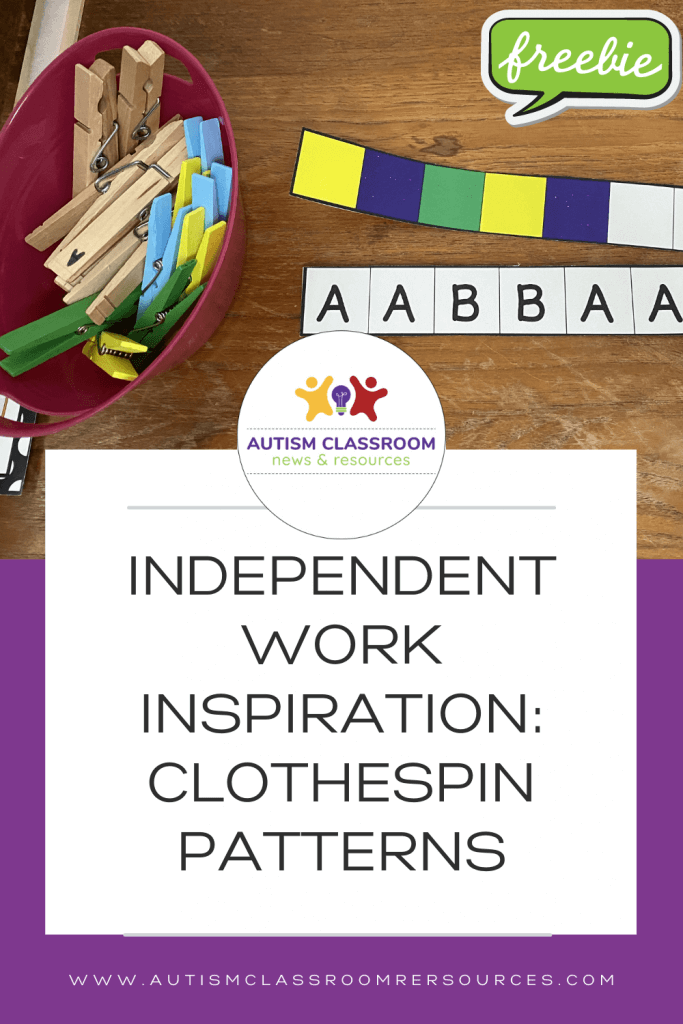
This clothespin patterns task is one of a million things you can do with clothespins. I used to have a training presentation of learning activities that were half made of clothespins. I love them because you don’t have use Velcro. And students practice fine motor skills while working. So, easy for you, more practice for them.
Another great thing for you? For this pattern set, I’ve already made the patterns for you and you can download them for free from the Resource Library. There is a link at the bottom of this post.
Independent Work Inspiration: Material List
- Clothespins. Colored or plain wood will work. Or you can use plastic ones.
- Download the free patterns from the resource library or make your own.

Clothespin Patterns: Who is it For?
I usually use these with elementary students as it lines up with activities that we used to do in preschool and kindergarten as part of the regular curriculum. It’s no longer in the general common curriculum, although there is some research that it should be that’s interesting. It’s a good way, in my opinion, to help our students (of all ages) to pay attention to details. It starts to extend their matching skills.
By using clothespin patterns, they have to keep making the pattern, not just match to sample. And to do that, they have to stretch their thinking just a bit. In the free set in the resource library, they start with simple ABAB patterns with colors and then build up to letters and numbers with slightly more complex patterns. They are still pretty simple, but they are intended to be for independent work.
Independent Work Inspiration Clothespin Patterns Video
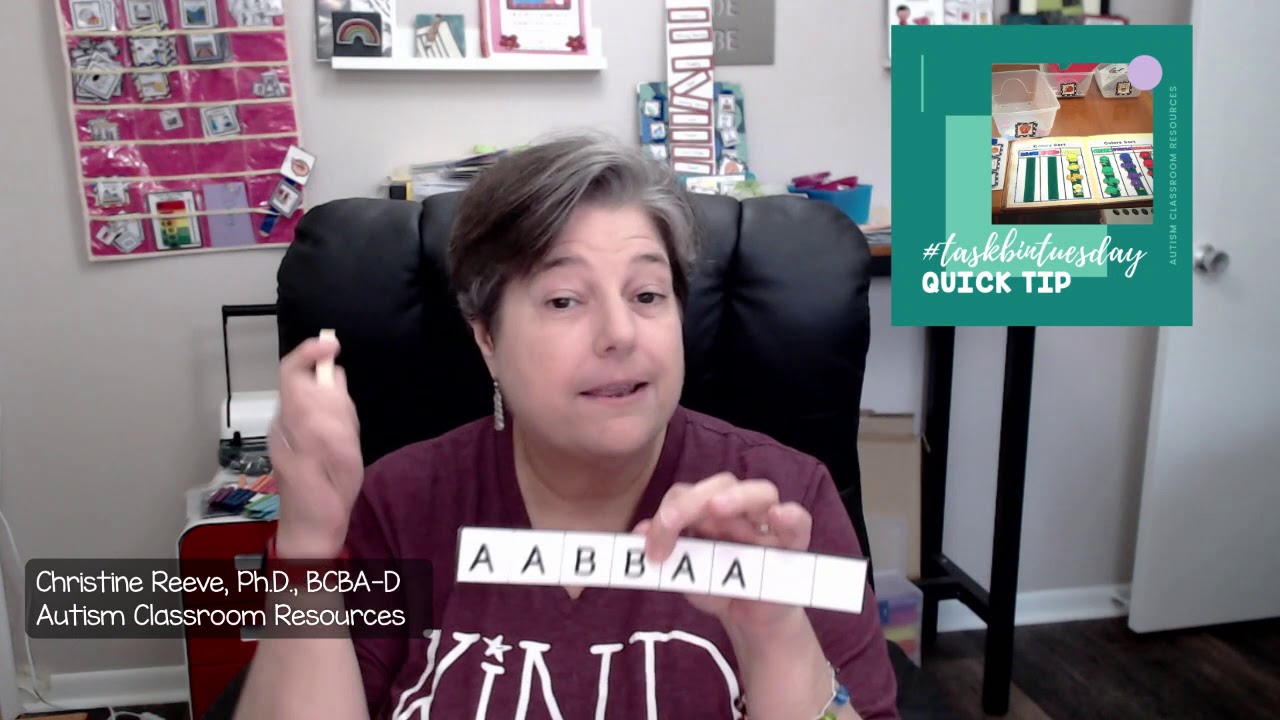
Tips for Clothespin Patterns Task
Once you download the free printable, you can cut out each strip. There are 8 strips total. If you want to use them without clothespins, make 2 copies. I would laminate them just to preserve them.
If you are using colored clothespins, you can just match the colored clothespins to the colored squares. Then take wooden clothespins and write in the letters and numbers needed for those strips as shown in the video. I used a permanent marker. If you don’t have clothespins you can write on, use a second copy of the strips and cut the squares out. Then Velcro, tape or hot glue them to the bottom of the clothespins.
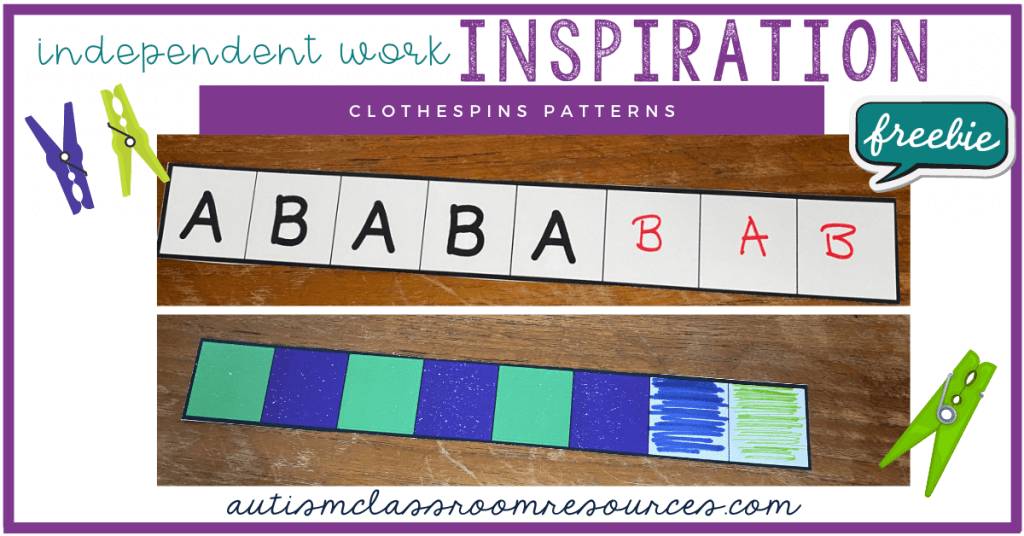
What if you don’t want to use clothespins at all? Perhaps your student has difficulty with fine motor skills that make that too hard? In that case, make 2 copies of the pages. Then cut one page into squares and have the students use the squares to complete the patterns. Another option is to have them color or write in the missing elements of the patterns as shown above in the picture.
Overall, it’s a pretty simple task to expand by just adding more sequences. You can easily make more and make them more difficult.
IWinspiration. A fun #workbox task that practices patterns with fine motor skills simultaneously. Find the materials list and tips for expanding it in this post. Click to Tweetsign up for free tips each week in your inbox and Grab a free work task from the resource library

Grab them from the Free Resource Library. Click below to navigate or join the free library.
Need more ideas for independent work inspiration? Check out the resources below.
More Workbasket Wednesday Resources

Looking for more ideas on special education work boxes or work systems and how they can be used? Check out the links in Resources below for more posts. And, I wrote about a book about them!
Buy From Amazon (including Kindle) (see my disclosure policy for more information about affiliate links).
GET ALL THE VISUALS AND ORGANIZATIONAL TOOLS YOU NEED to start independent work in your classroom.
These kits include an e-book with directions on setting up independent work systems and using the materials included, data sheets for tracking progress, visuals for the special education work boxes and schedules, what’s next visuals, and mastery sheets to keep track of which students have mastered which task.


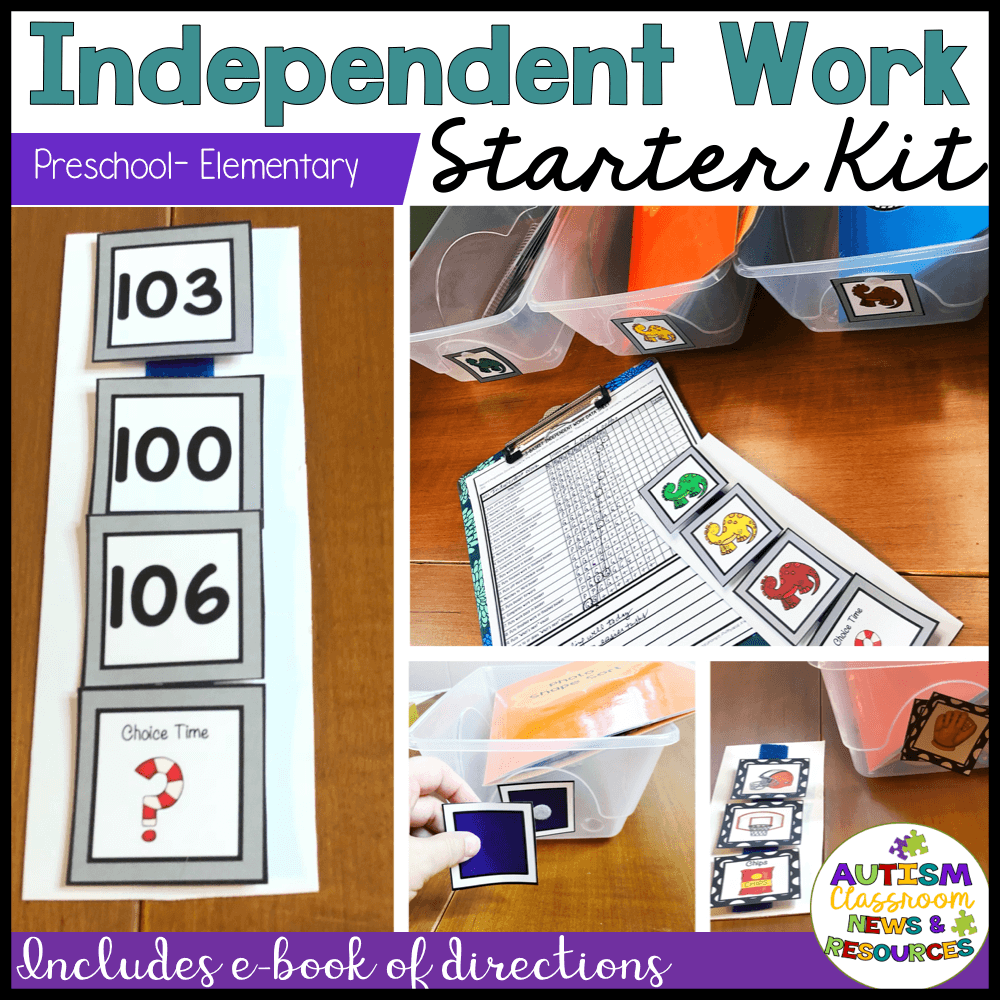
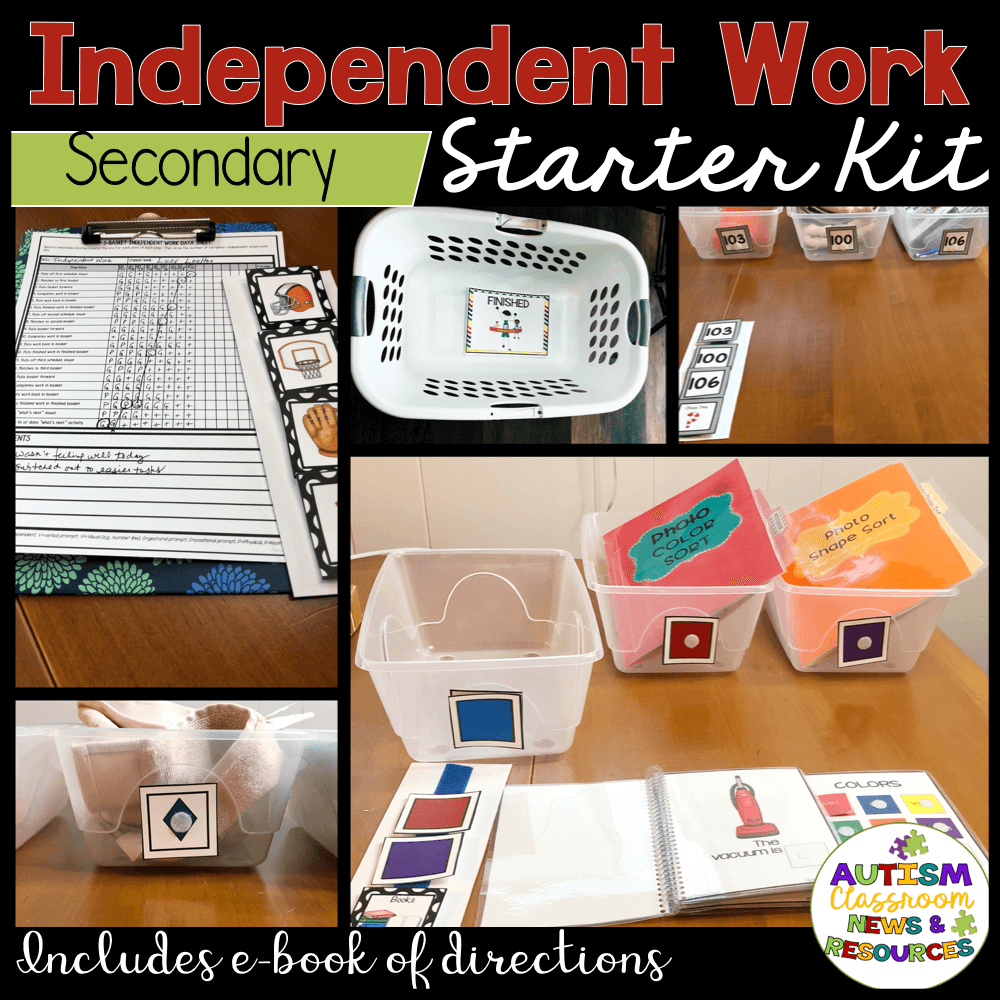

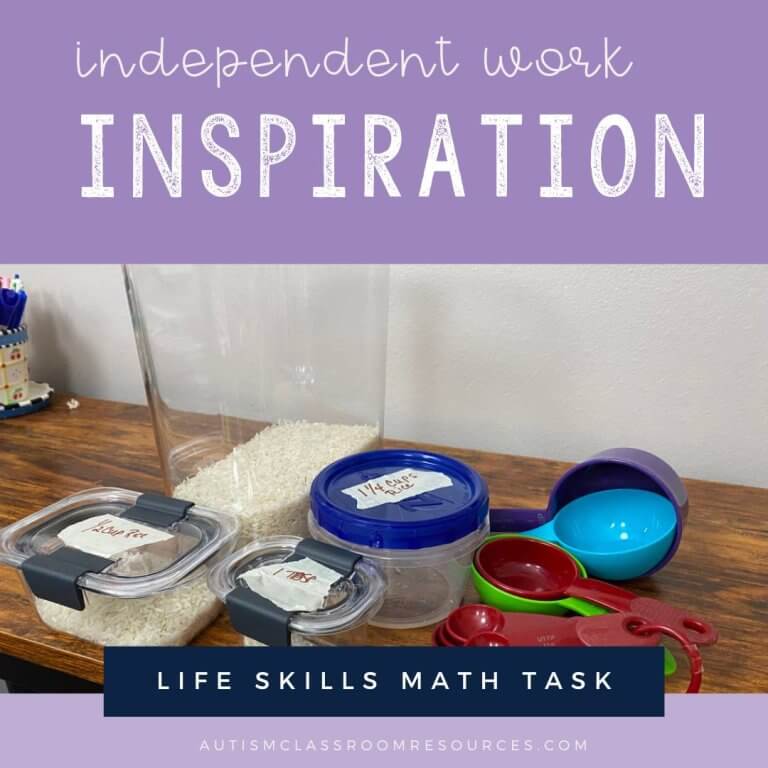
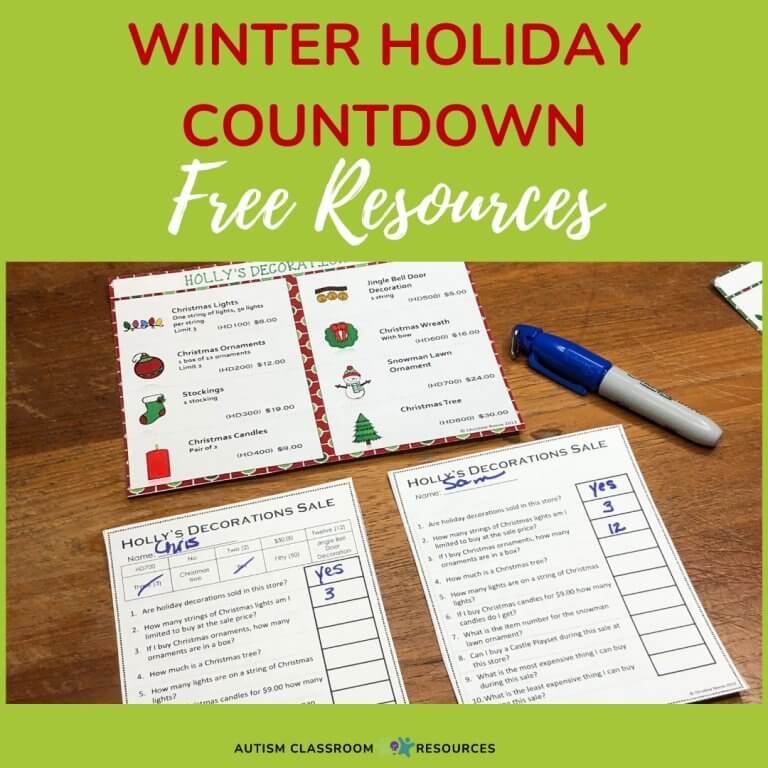
![Independent Work-3 Ways It can Become Your Best Classroom Management Tool [A sorting task in a shoebox to sort nouns from verbs on popsicle sticks into plastic cups]](https://autismclassroomresources.com/wp-content/uploads/2023/06/BLOG-22208-3-Ways-Task-Boxes-and-IW-Help-Classroom-Management-2-768x644.jpg)
